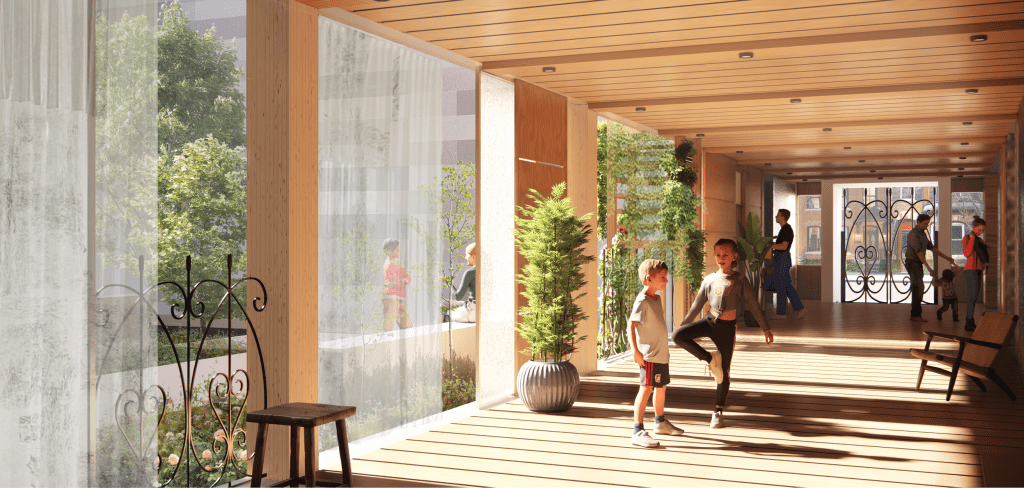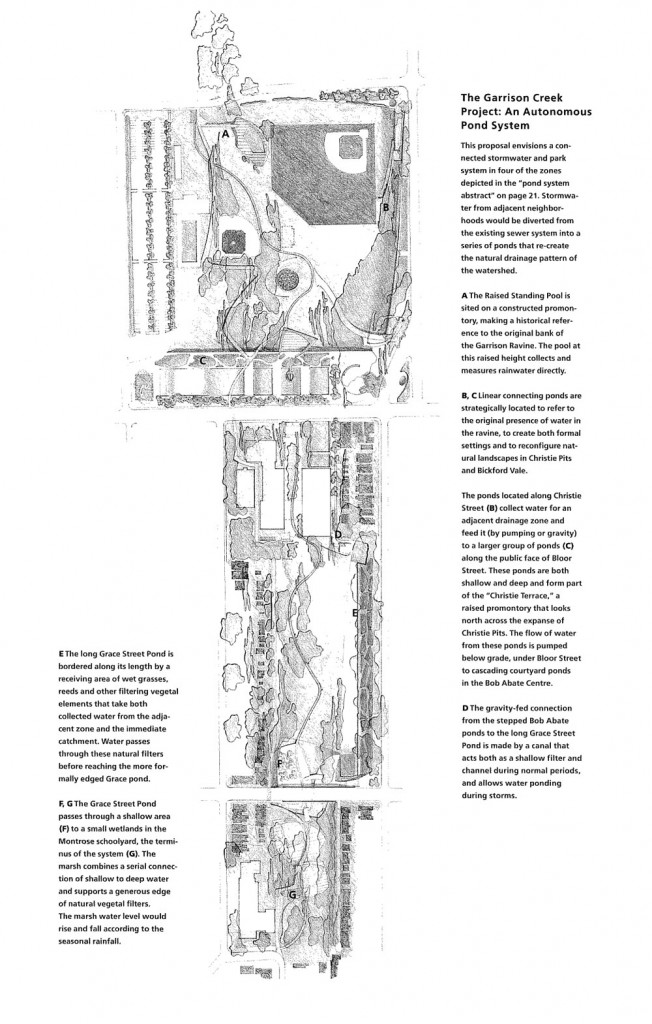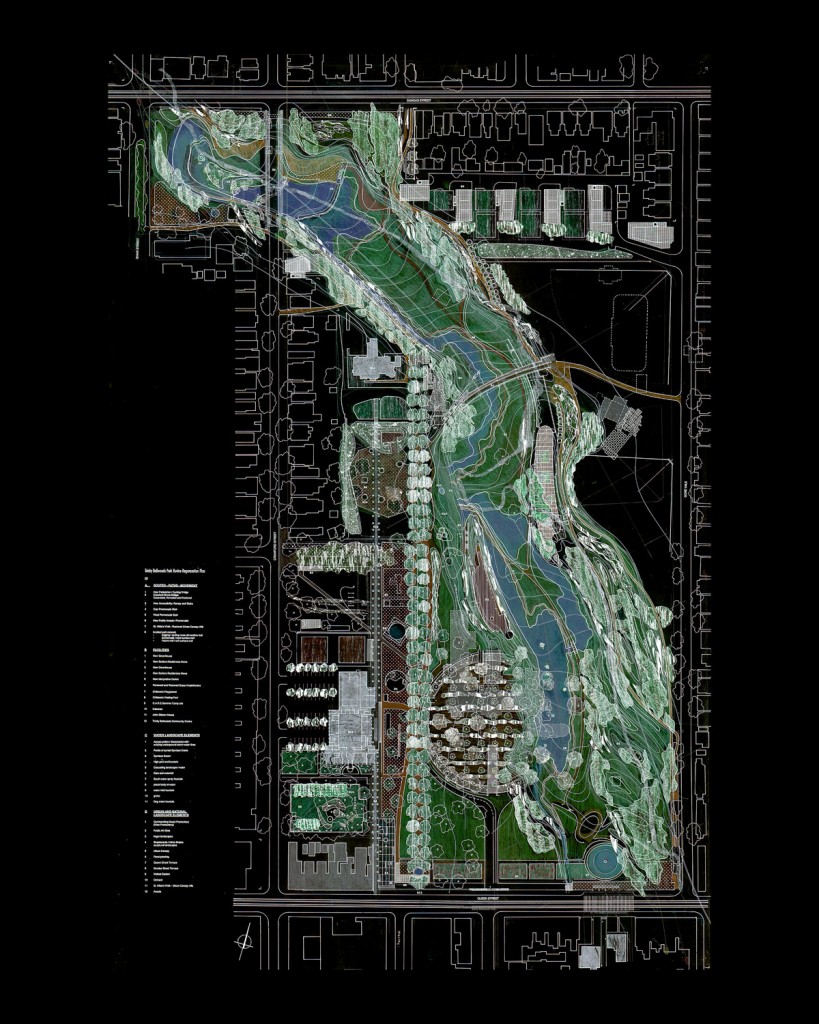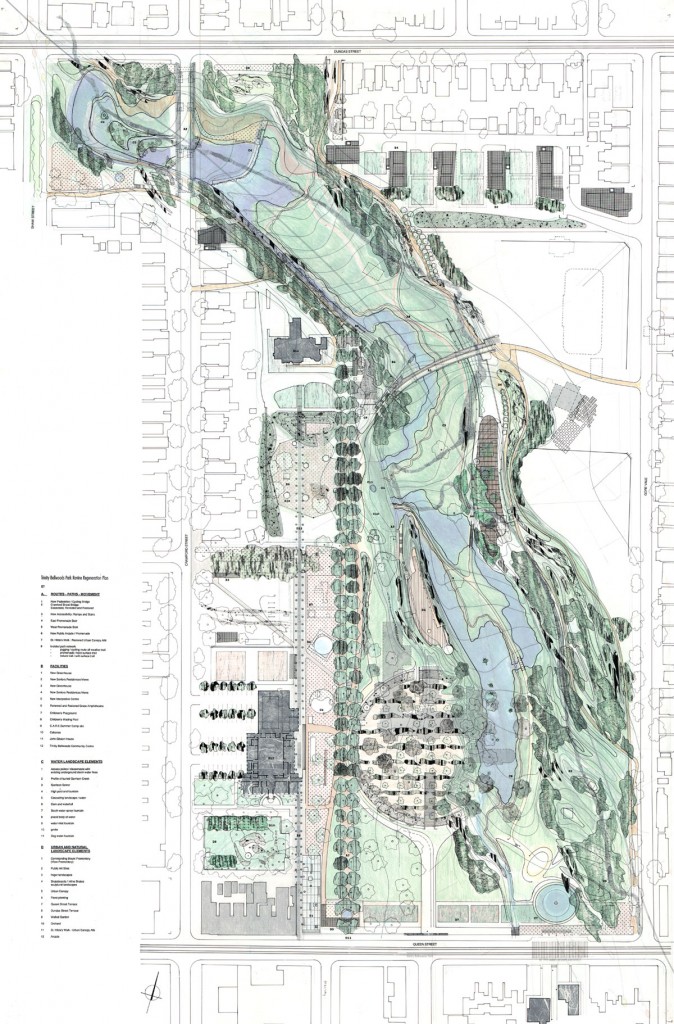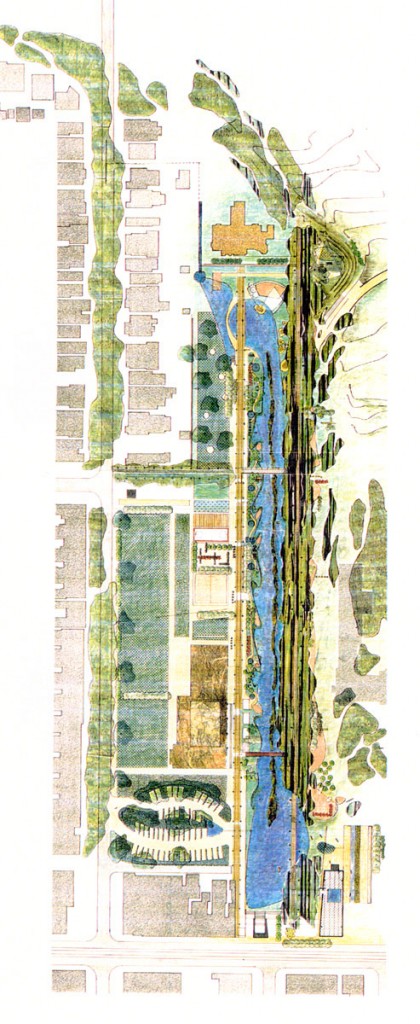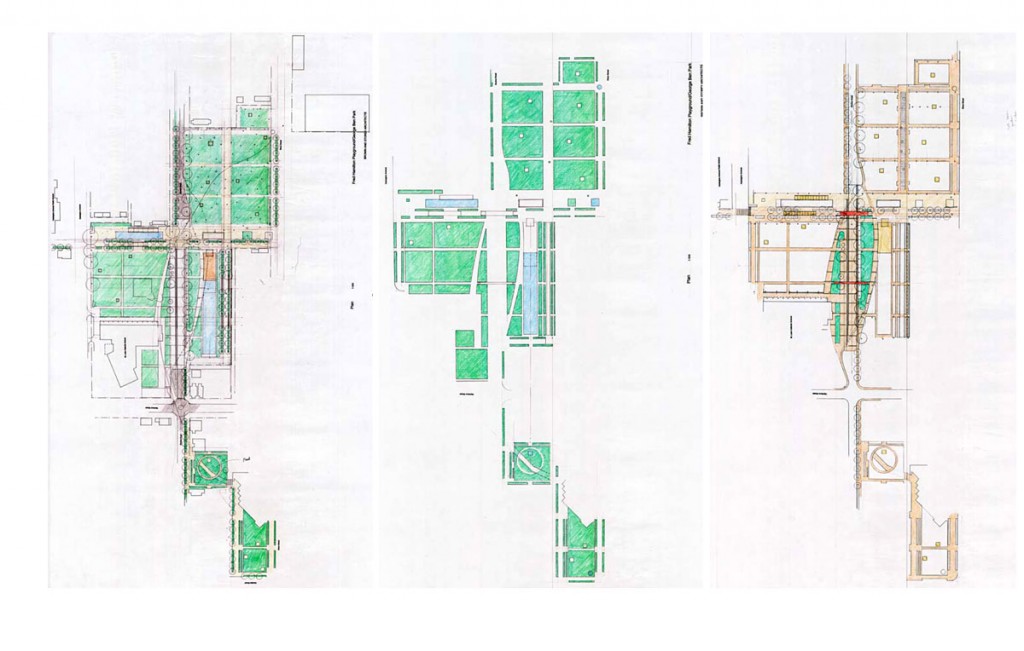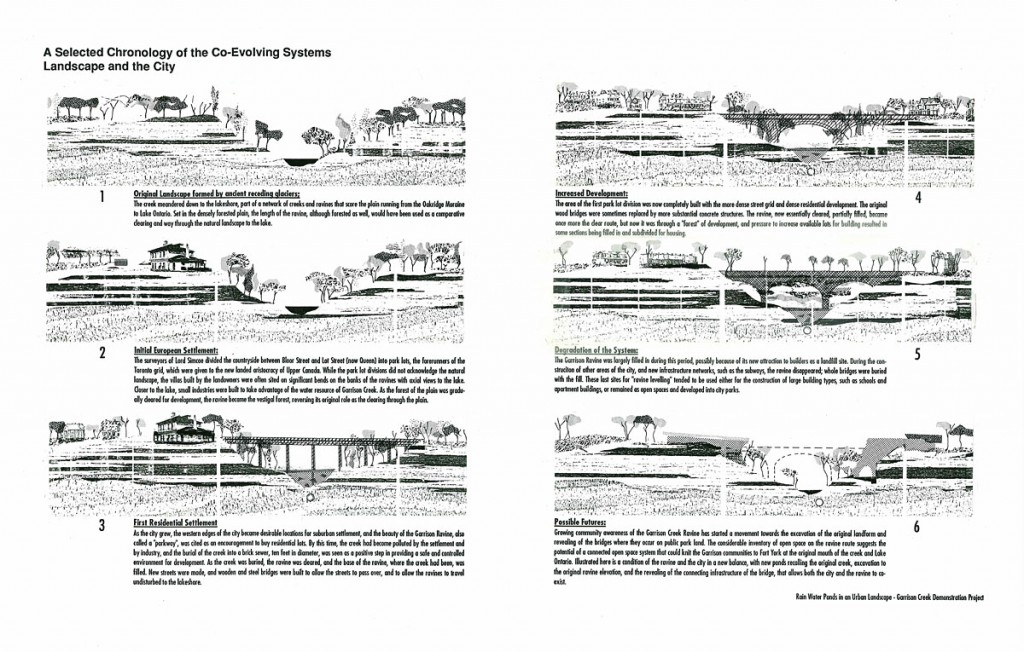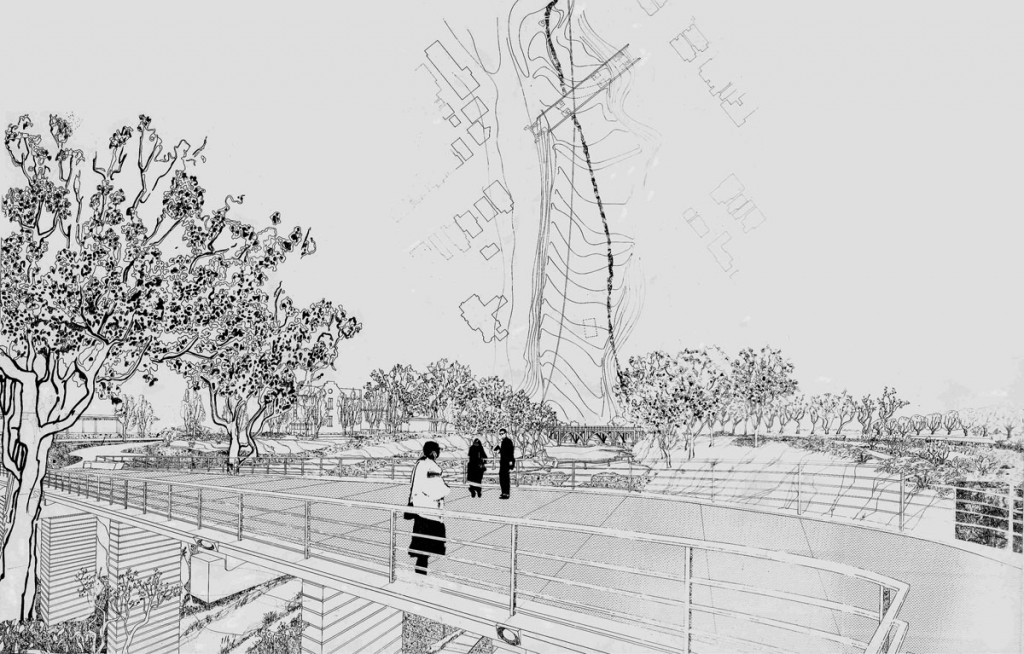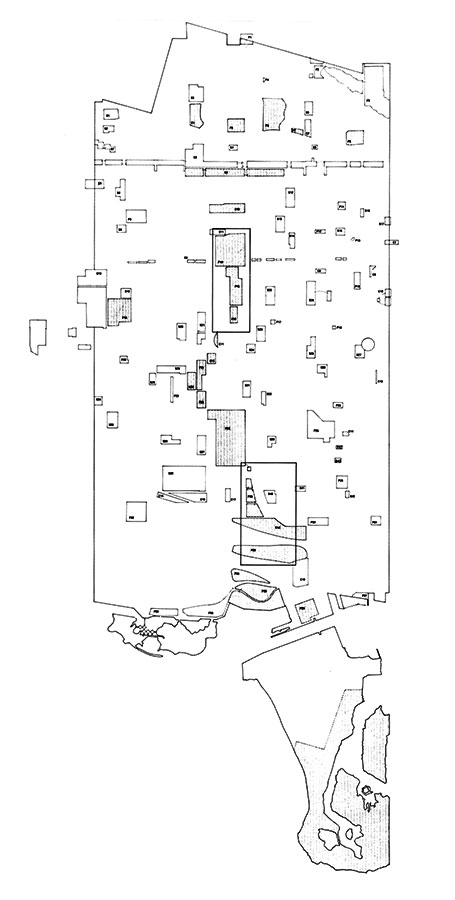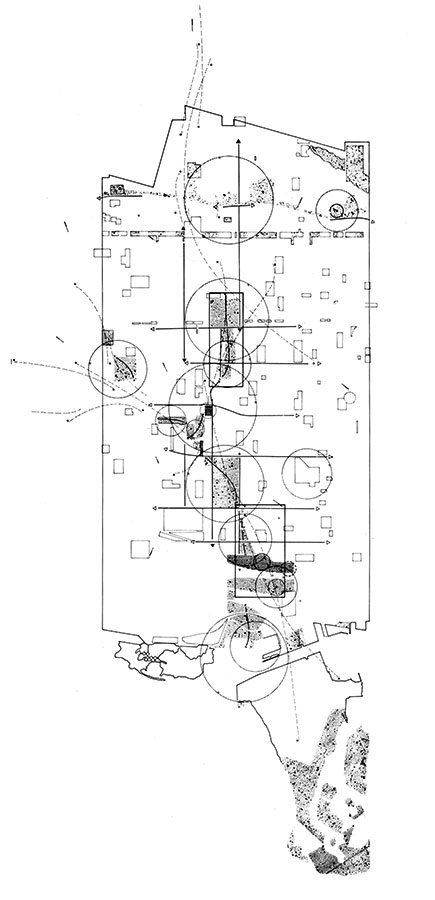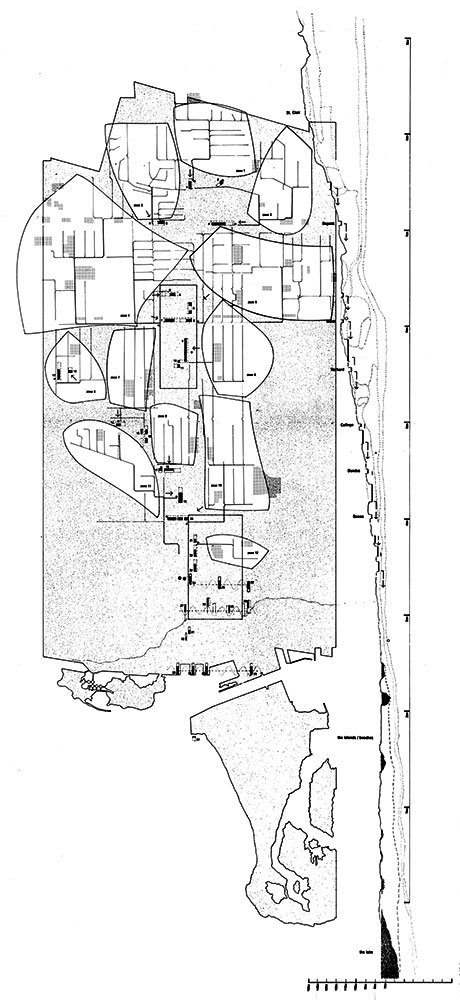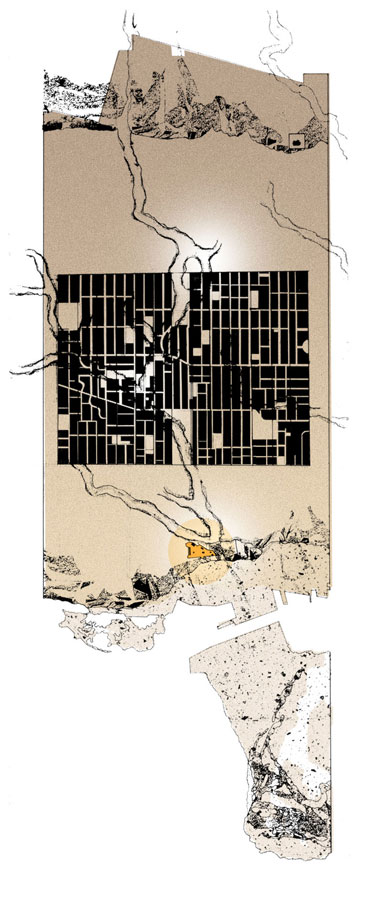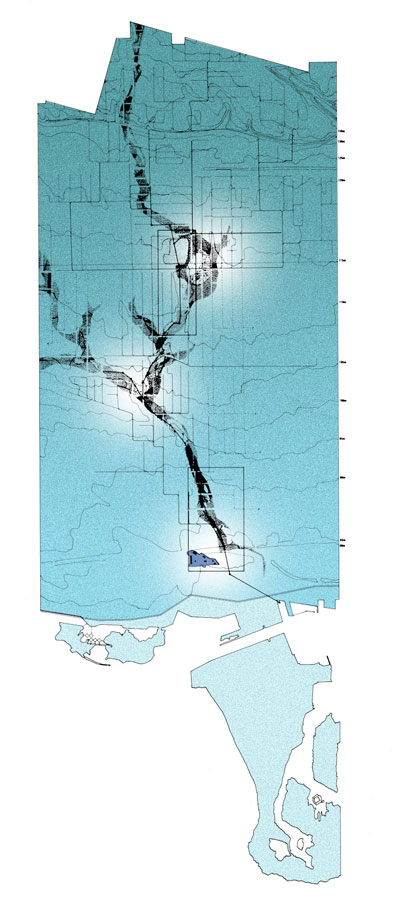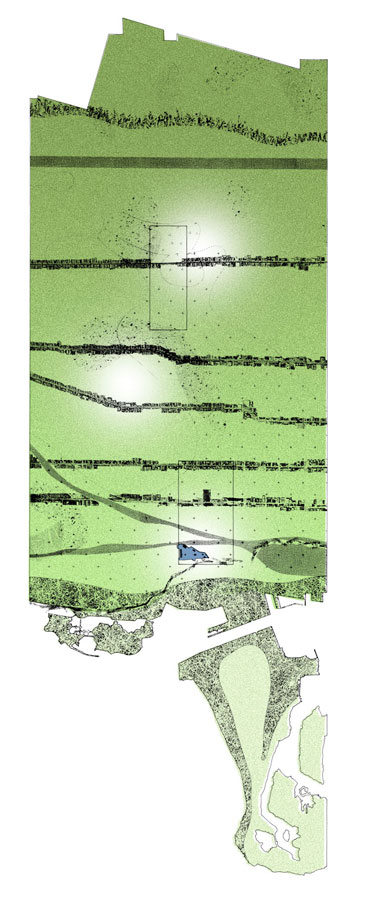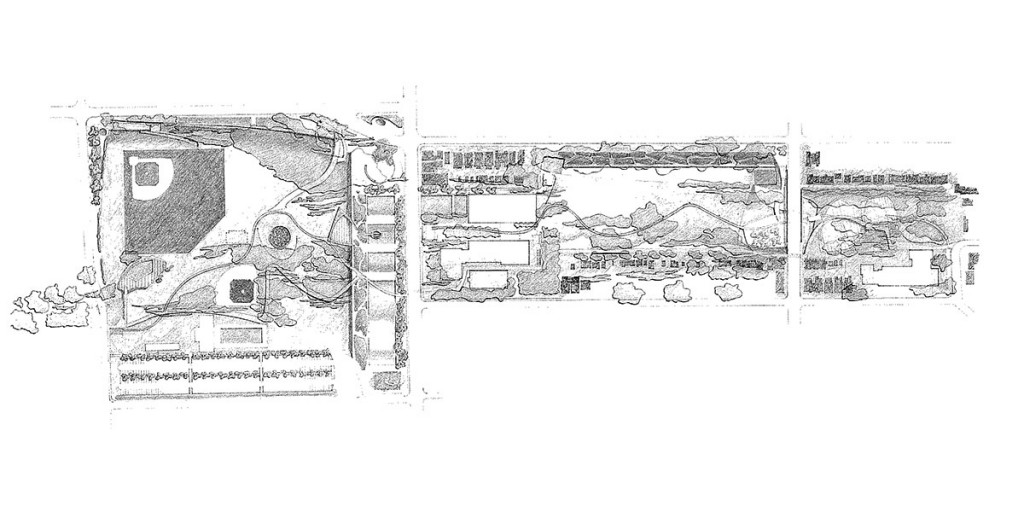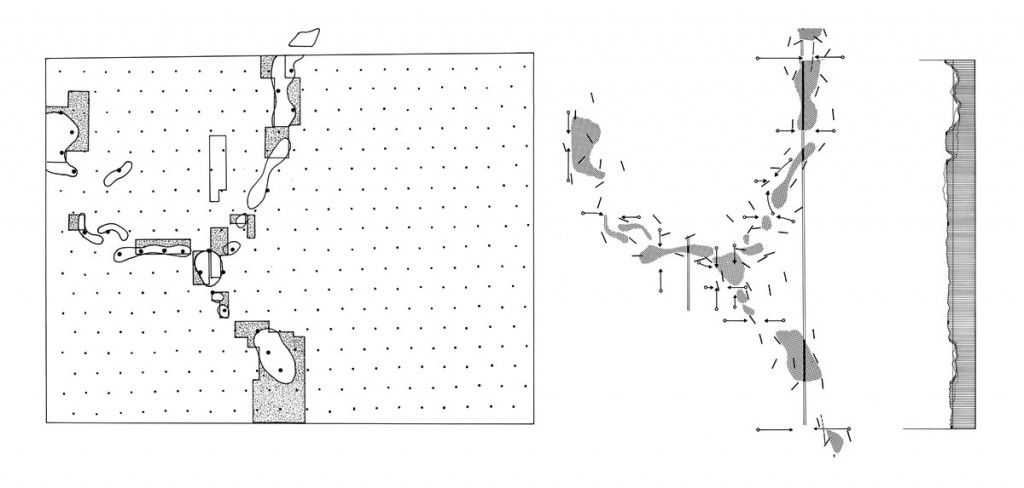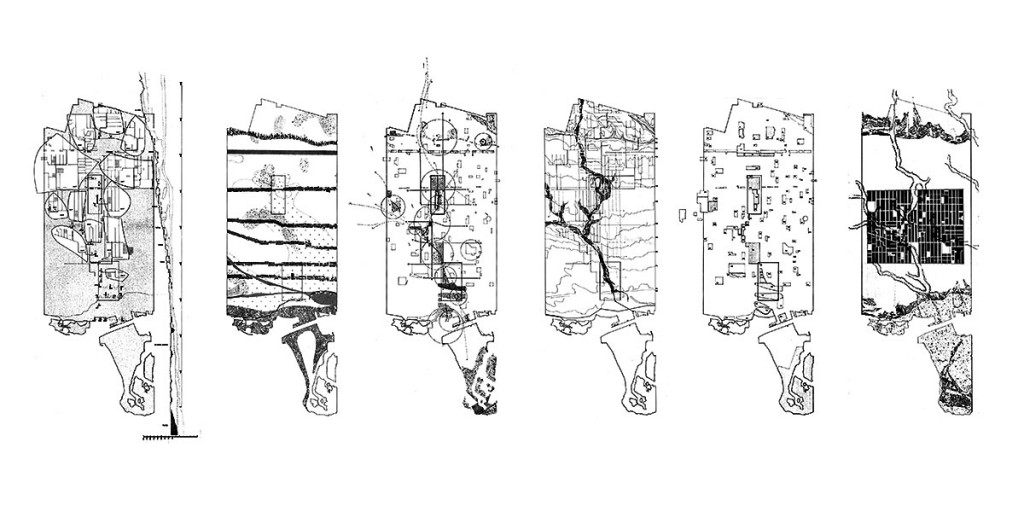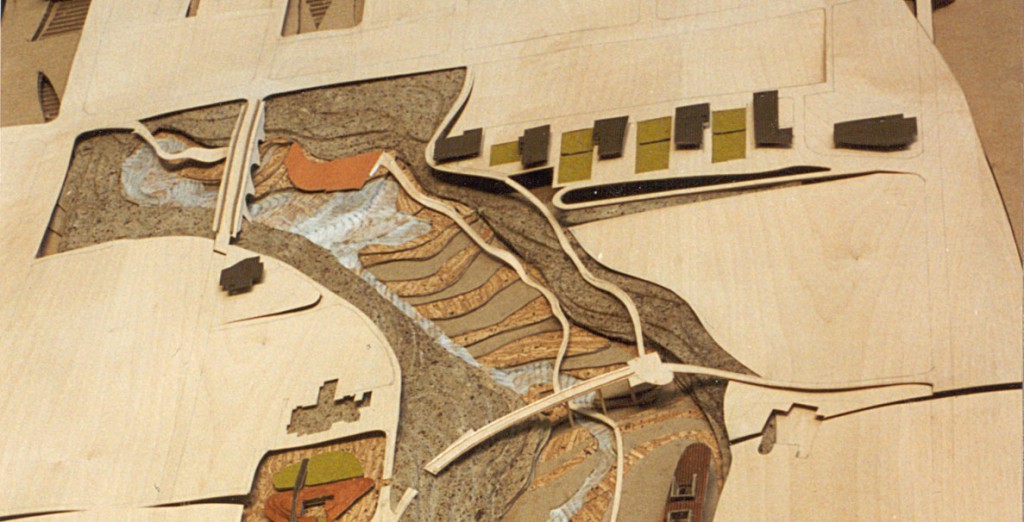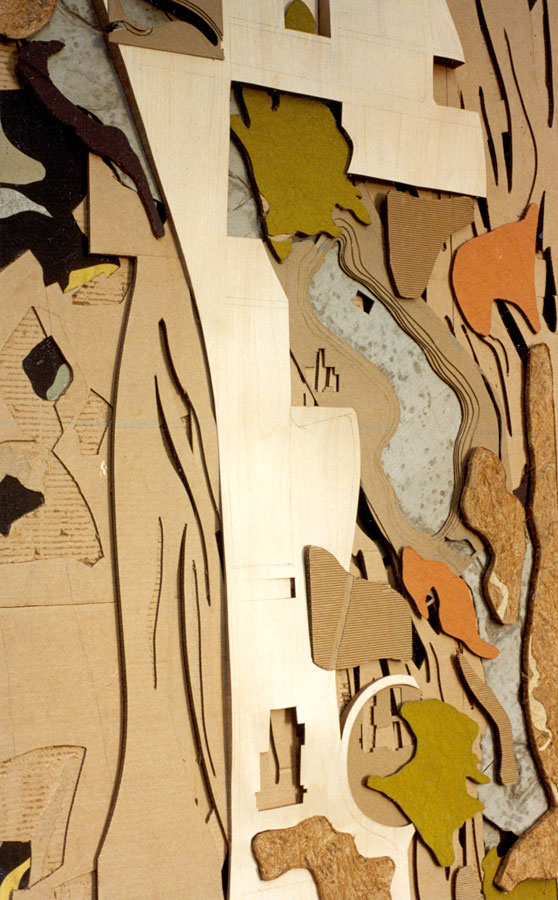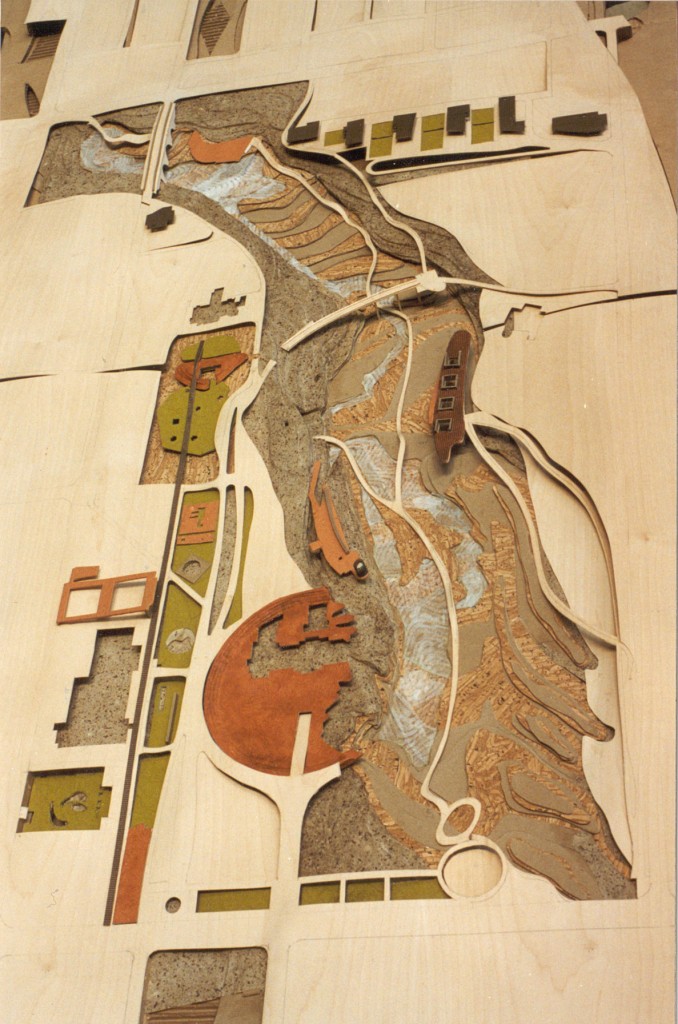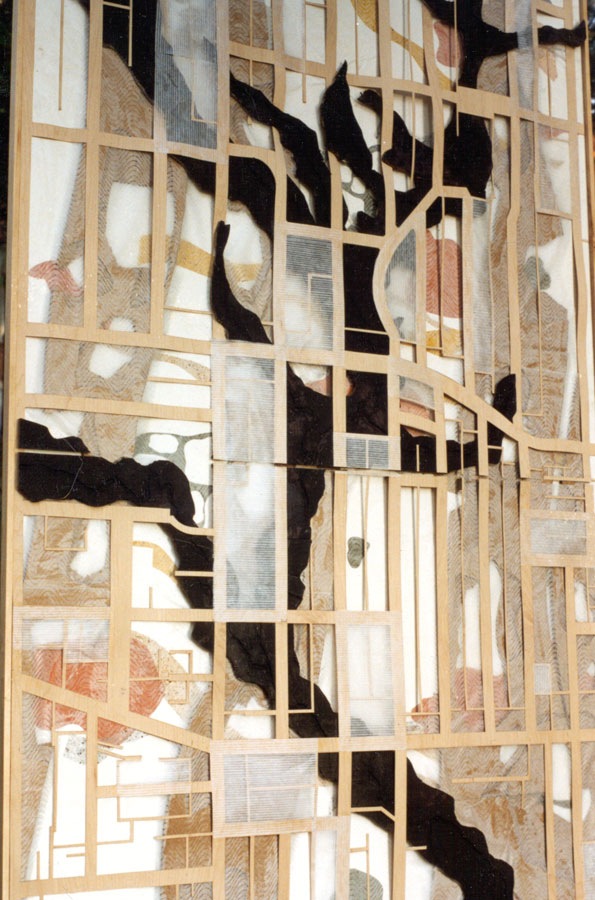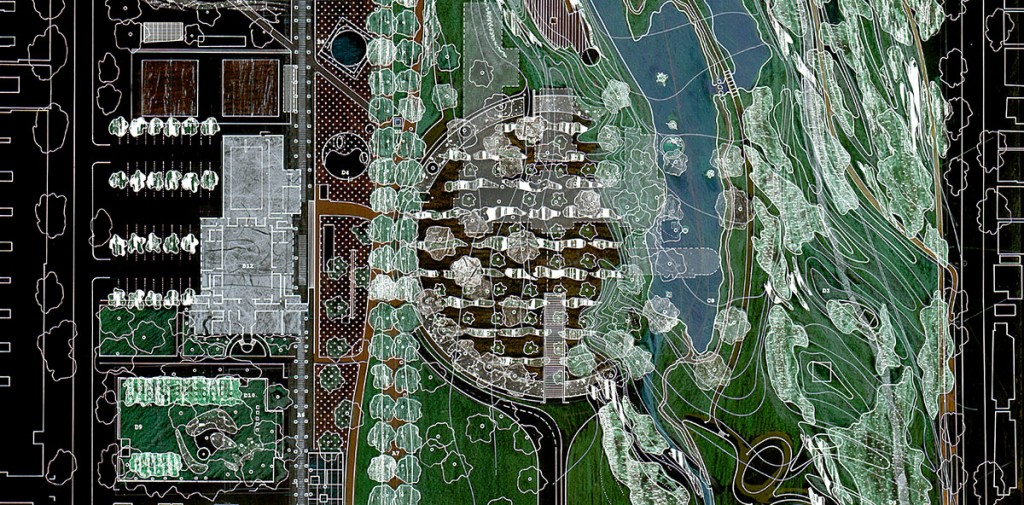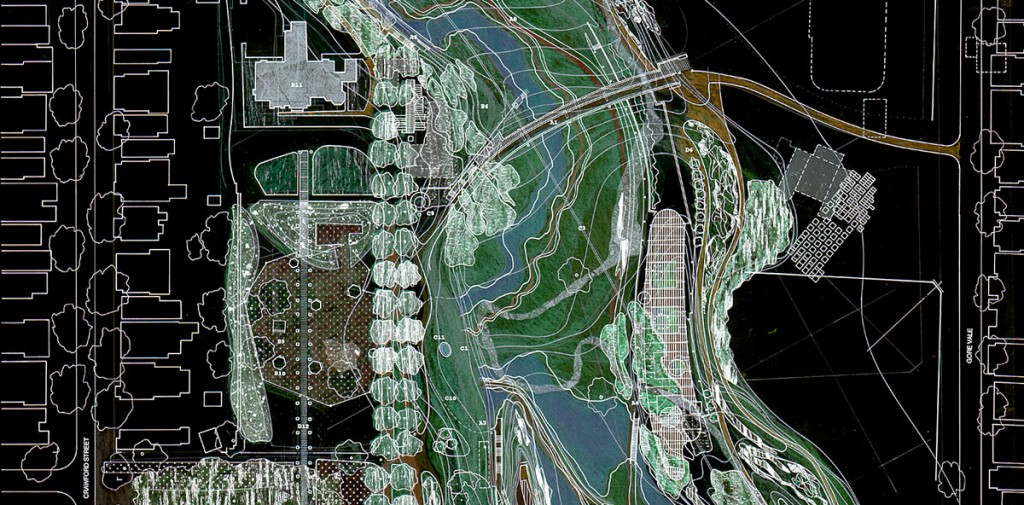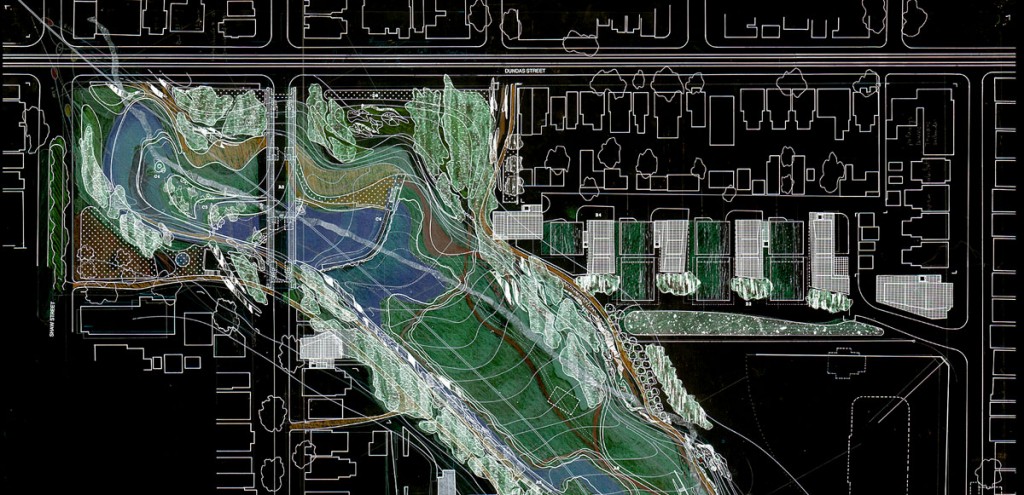Garrison Creek Demonstration Project

The connection, or disconnection between urbanism and environmentalism – city and nature – is made by the human intervention of “infrastructure”. How we choose to lay this groundwork for the physical support our daily lives can create a disjointed gap in our existence between our city and our natural environment. Or a considered infrastructure can knit these two sometimes incompatible elements together. This consideration of how our city deals with its stormwater collection, storage and treatment points to a new opportunity to make choices that can regenerate the open and hidden landscapes of Toronto into a living part of the experience of our communities.
Brown + Storey Architects were commissioned by the Waterfront Regeneration Trust to investigate the conceptual feasibility of providing rain water detention ponds that would help retain, treat, and promote reuse in the existing open space that trace the route of the buried Garrison Ravine.
The thesis of this study suggests that the existing natural watersheds, like the Garrison, can be used as sites for stormwater management pond systems. Not only can these connected pond systems serve to collect, treat and re-use stormwater locally, they can also act as a catalyst in the creation of a series of connected open spaces knitting both an urban and green infrastructure back to the waterfront to Lake Ontario.
The study documents several aspects of the Garrison watershed: the considerable amount of open spaces, their area and type, geological formations, existing storm water infrastructure underground, the areas of fill along the ravine path, and an abstracted locational plan for water retention ponds.
More information:
Garrison Creek Demonstration Project – Project Report.
“Rainwater in the Urban Landscape,” Places 10:3.
“Infrastructure and Parks: The Garrison Creek Community Project,” The Canadian Architect June 1994.
